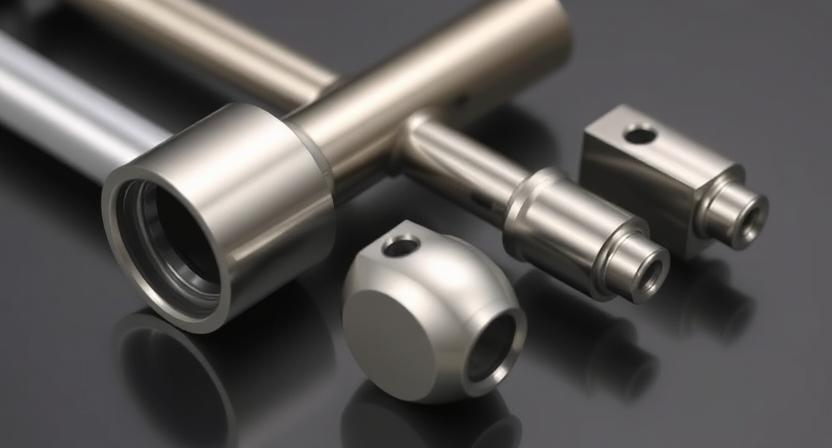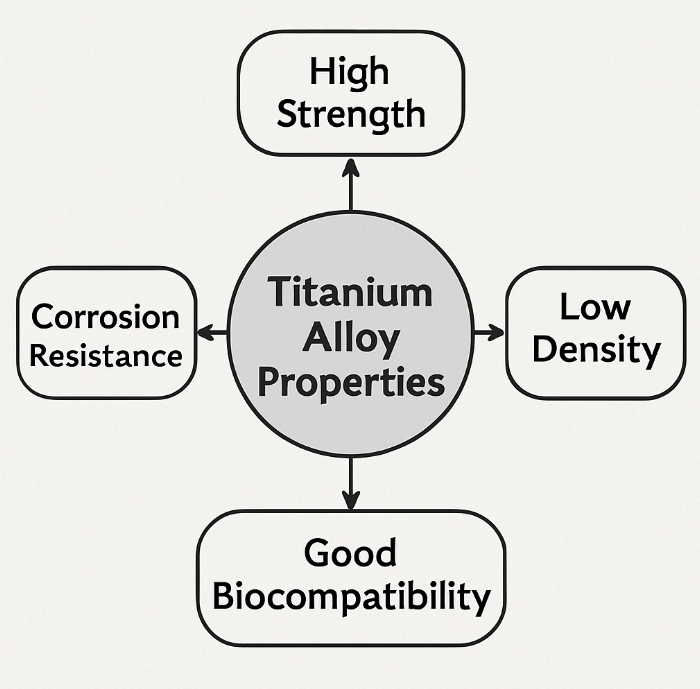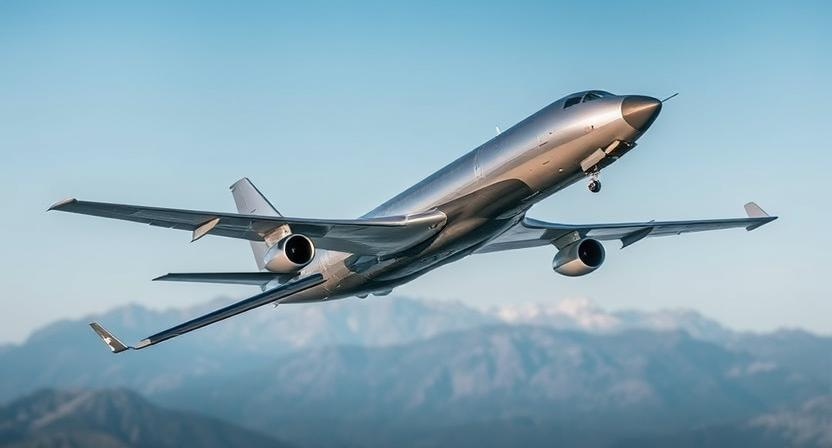The sky is no longer the limit, and the materials we use to reach it are constantly evolving. At the heart of modern aircraft and spacecraft design is a remarkable metal: aerospace grade titanium. This comprehensive guide will explore why these specialized alloys are the backbone of the aerospace industry, covering their unique titanium properties, key grades like 6Al-4V Grade 5 aerospace titanium, and crucial titanium applications.
Aerospace grade titanium refers to titanium alloys that are specifically manufactured and certified to meet the incredibly strict performance and quality standards of the aviation and space industries. Unlike pure titanium, these grades are mixed with other elements—most commonly aluminum and vanadium—to enhance their natural properties. This process creates titanium alloys aerospace engineers rely on for mission-critical components.
The core advantage of titanium is its phenomenal high strength-to-weight ratio. It is as strong as some steels but nearly 45% lighter, making it a critical choice for any design where every ounce matters. This unique combination of strength and low density is what makes it the go-to material for creating lightweight titanium structures that boost fuel efficiency and performance.
Exceptional Strength-to-Weight Ratio: The defining feature that allows for lighter, more efficient designs.
Superior Corrosion Resistance: Highly resistant to harsh environments, including saltwater and chemical exposure.
High-Temperature Performance: Maintains strength and integrity at temperatures that would cause aluminum to fail.
Fatigue Resistance: Excellent durability under repeated stress cycles, essential for airframes and engine parts.

While there are many different titanium alloys aerospace engineers can choose from, two grades dominate the market due to their versatility and proven reliability. Understanding these grades is key to understanding the material science behind modern flight.
The most widely used and recognizable alloy in the aerospace sector is 6Al-4V Grade 5 aerospace titanium. This alpha-beta alloy accounts for over 50% of all titanium used in aerospace applications. Its composition—6% aluminum and 4% vanadium—gives it an outstanding balance of strength, ductility, and fracture toughness.
This is the quintessential high-strength titanium alloy. Its robust nature makes it perfect for components that face extreme stress and heat, such as turbine blades, engine casings, landing gear, and structural airframe parts. When a design calls for maximum strength with minimal weight, 6Al-4V Grade 5 aerospace titanium is the first choice.
Another crucial material is aerospace grade 3al 2 5v titanium, also known as Grade 9. This alloy, with 3% aluminum and 2.5% vanadium, offers a slightly lower strength than Grade 5 but boasts superior weldability and formability. This makes it ideal for applications that require complex shapes and tubing.
The exceptional workability of 3 2 5 aerospace grade titanium makes it the material of choice for hydraulic lines, fuel lines, and other critical fluid transfer systems within an aircraft. Its ability to be drawn into seamless tubing while retaining excellent strength and corrosion resistance is unmatched, contributing significantly to the overall reliability and safety of the aircraft's internal systems.

| Alloy Name | Common Grade | Key Keyword | Primary Use | Key Feature |
|---|---|---|---|---|
| Ti-6Al-4V | Grade 5 | 6Al-4V Grade 5 aerospace titanium | Engine components, structural airframe parts, landing gear | Highest strength, excellent all-around performance |
| Ti-3Al-2.5V | Grade 9 | aerospace grade 3al 2 5v titanium | Hydraulic and fuel line tubing, ducting | Excellent weldability and formability |
To fully appreciate why titanium is so vital to aerospace, we must look closer at its specific titanium properties. These characteristics go beyond simple strength and weight, addressing the complex challenges of flight and space travel.
In aerospace, the strength-to-weight ratio is the most important metric. Titanium excels here. For a given structural load, a titanium component will be significantly lighter than a steel one. This reduction in weight directly translates to massive savings in fuel consumption over the lifespan of an aircraft, making lightweight titanium a core economic and performance driver.
Titanium naturally forms a thin, dense, protective oxide layer on its surface when exposed to air. This layer is incredibly stable and self-healing, providing outstanding resistance to corrosion, especially in marine environments or against aggressive chemicals often found in aircraft fuels and hydraulic fluids. This durability ensures longer component life and reduced maintenance costs.
Unlike aluminum, which rapidly loses strength above 300°F (150°C), titanium alloys maintain their strength and structural integrity at much higher temperatures, often exceeding 1000°F (550°C). This makes them indispensable for the "hot sections" of jet engines, including compressors, fan blades, and exhaust components.
Aircraft structures are constantly subjected to stress cycles (takeoff, flight, landing). Titanium's high fatigue strength means it can endure these cycles for decades without failure. Furthermore, its excellent fracture toughness—the ability to resist crack propagation—is a critical safety feature, ensuring that small defects do not lead to catastrophic structural failure.
The range of titanium applications in aerospace is vast, covering everything from the nose cone to the tail. Its unique properties allow it to be used in three main areas: airframes, engines, and specialized systems.

Titanium is used in critical structural areas that require high strength and stiffness, such as wing spars, fuselage bulkheads, and landing gear components. The use of lightweight titanium in these areas significantly reduces the overall weight of the aircraft, directly improving performance metrics like range and payload capacity.
Modern jet engines are perhaps the most demanding application. Titanium is used extensively in the fan and compressor sections. Components include:
Fan Blades: Especially in the front stages, where they must withstand bird strikes and foreign object damage.
Compressor Discs and Blades: Where temperatures and rotational stresses are extremely high.
Engine Casings and Mounts: Providing structural integrity under intense thermal and mechanical loads.
Beyond the main structure, titanium applications extend to complex systems:
Hydraulic and Fuel Lines: Using aerospace grade 3al 2 5v titanium (Grade 9) tubing for its superior weldability and pressure resistance.
Fasteners: High-strength titanium bolts and rivets are used in critical joints.
Spacecraft Components: Fuel tanks, pressure vessels, and structural elements in satellites and rockets, where the need for lightweight titanium is paramount.
When designing an aircraft, engineers frequently face the choice between aerospace grade aluminum or titanium. Both are light metals, but their performance envelopes are vastly different. Understanding this comparison is crucial for material selection.
Aluminum is lighter than titanium and significantly cheaper. It is the primary material for the majority of an aircraft's fuselage and wing skins. However, aluminum's major drawback is its rapid loss of strength at elevated temperatures. Once temperatures exceed about 300°F (150°C), aluminum is no longer a viable option.
Titanium, while about 60% denser than aluminum, offers a much higher strength-to-weight ratio in high-stress and high-temperature environments. For example, the high-strength titanium alloy Ti-6Al-4V maintains its structural integrity where aluminum would simply melt or deform. This is why titanium dominates the engine and landing gear sections, while aluminum is used for the bulk of the airframe.
| Property | Aerospace Grade Titanium | Aerospace Grade Aluminum | Conclusion |
|---|---|---|---|
| Density | Higher (Approx. 4.5 g/cm³) | Lower (Approx. 2.7 g/cm³) | Aluminum is lighter by volume. |
| Max Operating Temp. | Very High (Up to 1000°F / 550°C) | Low (Around 300°F / 150°C) | Titanium is essential for hot zones. |
| Corrosion Resistance | Excellent (Naturally passivated) | Good (Requires surface treatment) | Titanium is superior in harsh conditions. |
| Cost | High | Low | Aluminum is cheaper for non-critical areas. |
The choice is not about which is "better," but which is **optimal** for the specific job. Titanium is used sparingly and strategically where its superior performance justifies the higher cost, while aluminum is used widely where its low cost and lightweight nature are sufficient.
Working with aerospace grade titanium is notoriously difficult. It is highly reactive, especially when molten, and its hardness makes it challenging to machine. This difficulty contributes to its high cost, but advances in manufacturing are making it more accessible.
New techniques are revolutionizing how titanium components are made:
Additive Manufacturing (3D Printing): Electron Beam Melting (EBM) and Laser Powder Bed Fusion (LPBF) are used to print complex titanium parts, reducing material waste and the need for extensive machining. This is particularly effective for complex engine components.
Isothermal Forging: A process used to create near-net-shape parts, minimizing the amount of material that needs to be cut away.
Despite the energy-intensive process of extracting and refining titanium, the material is highly sustainable in its use. Its extreme durability and long lifespan mean components need to be replaced less often. Furthermore, titanium scrap is highly valuable and easily recyclable, supporting the industry's push for greener manufacturing practices.
From the high-pressure environment of a jet engine's compressor to the complex tubing of a hydraulic system, aerospace grade titanium is an indispensable material. The combination of its remarkable titanium properties—including its superior strength-to-weight ratio, high-temperature resilience, and corrosion resistance—ensures that it remains the material of choice for the most critical titanium applications.
Whether it is the ubiquitous 6Al-4V Grade 5 aerospace titanium providing the backbone of structural integrity or the specialized aerospace grade 3al 2 5v titanium enabling flexible fluid transfer, this metal is a silent hero of modern engineering. As the aerospace industry continues to push the boundaries of speed, efficiency, and safety, the demand for this high-strength titanium will only grow, solidifying its role as the ultimate material for flight.
If you are looking for a reliable and high-quality source for the aerospace grade titanium alloys we've discussed, we invite you to connect with us at chinatitaniumfactory.com. As a trusted manufacturer and supplier, we specialize in materials like Ti-6Al-4V (Grade 5) and Ti-3Al-2.5V (Grade 9), ensuring they meet the stringent requirements of the global aerospace industry.
Contact Supplier Now